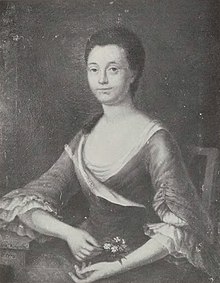John Blair Jr.
John Blair Jr. | |
|---|---|
College of William and Mary, Colony of Virginia | |
| In office 1766-1770 | |
| Preceded by | Mann Page |
| Succeeded by | John Page |
| Personal details | |
| Born | April 17, 1732 Williamsburg, Virginia, British America |
| Died | August 31, 1800 (aged 68) Williamsburg, Virginia, U.S. |
| Political party | Federalist |
| Parent |
|
| Education | College of William & Mary (BA) Middle Temple |
| Signature | |
John Blair Jr. (April 17, 1732 – August 31, 1800) was an American
A Virginia lawyer since 1757, Blair represented the
Early life and education
John Blair was born in
As had his father, Blair attended William & Mary, receiving a Bachelor of Arts in 1754. In 1755, he went to London to study law at the Middle Temple.
Career
Returning home to practice law, Blair was admitted to the Virginia bar in 1757 and quickly thrust into public life. He began his public career shortly after the close of the French and Indian War with his election to the seat reserved for the College of William and Mary in the House of Burgesses (1766–1799). He went on to become clerk of the Governor's Council, the upper house of the colonial legislature (1770–1780).
Blair originally joined the moderate wing of the Patriot cause. He opposed Patrick Henry's extremist resolutions in protest of the Stamp Act, but the dissolution of the House of Burgesses by Parliament profoundly altered his views. In response to a series of taxes on the colonies passed by Parliament, Blair joined George Washington and others in 1770 and again in 1774 to draft nonimportation agreements which pledged their supporters to cease importing British goods until the taxes were repealed. In 1775, he reacted to the British Parliament's passage of the Intolerable Acts by joining those calling for a Continental Congress and pledging support for the people of Boston who were suffering economic hardship because of Parliament's actions.
When the

In 1786, the legislature, recognizing Blair's prestige as a jurist, appointed him Thomas Jefferson's successor on a committee revising the laws of Virginia. The following year, he was appointed as a delegate to the Constitutional Convention.[4]
On September 24, 1789, President George Washington nominated Blair for one of the five
Freemasonry
Blair was a very active Freemason, and a Past Master of Williamsburg Lodge, involved in the formation of the first Grand Lodge of Virginia. The convention which was called to form the Grand Lodge was petitioned for by Williamsburg Lodge, and following their first meeting in 1777, Blair was elected the very first Grand Master of Freemasons in Virginia on October 13, 1778, in Williamsburg.[7]
Personal life
He married his cousin, Jean Balfour Blair.[4]
Death and legacy
Blair died in Williamsburg on August 31, 1800. He was buried at the Bruton Parish Churchyard in Williamsburg.[4]
Blair Street in Madison, Wisconsin is named in his honor.[8]
See also
References
- ^ a b "Justices 1789 to Present". Washington, D.C.: Supreme Court of the United States. Retrieved 15 February 2022.
- ^ Van Horne, John C. "John Blair (ca. 1687–1771)". Encyclopedia Virginia. Retrieved 19 February 2022.
- ^ Van Horne, John C. "John Blair (ca. 1687–1771)". Encyclopedia Virginia. Retrieved 19 February 2022.
- ^ a b c d Lynch, Jack (Spring 2006). "A Man of Firmness: Justice John Blair and the Letter of the Law". Colonial Williamsburg Journal. Retrieved 19 February 2022.
- ^ a b "John Blair Jr". Oyez. Chicago-Kent College of Law at Illinois Tech. Archived from the original on 14 September 2016. Retrieved 26 July 2016.
- ^ "Supreme Court Nominations (1789-Present)". Washington, D.C.: United States Senate. Retrieved 19 February 2022.
- ^ "Virginia Methodical Digest" (PDF). Retrieved 25 November 2023.
- ^ "Odd Wisconsin Archives: Origins of Madison Street Names". Wisconsin Historical Society. 29 March 2006. Archived from the original on 23 April 2006.
Further reading
- ISBN 0-19-506557-3.
- Cushman, Clare (2001). The Supreme Court Justices: Illustrated Biographies, 1789–1995 (2nd ed.). (ISBN 1-56802-126-7.
- Flanders, Henry. The Lives and Times of the Chief Justices of the United States Supreme Court. Philadelphia: J. B. Lippincott & Co., 1874 at Google Books.
- Frank, John P. (1995). Friedman, Leon; Israel, Fred L. (eds.). The Justices of the United States Supreme Court: Their Lives and Major Opinions. Chelsea House Publishers. ISBN 0-7910-1377-4.
- ISBN 0-19-505835-6.
- Martin, Fenton S.; Goehlert, Robert U. (1990). The U.S. Supreme Court: A Bibliography. Washington, D.C.: Congressional Quarterly Books. ISBN 0-87187-554-3.
- Urofsky, Melvin I. (1994). The Supreme Court Justices: A Biographical Dictionary. New York: Garland Publishing. pp. 590. ISBN 0-8153-1176-1.
External links
- John Blair Jr. at the Biographical Directory of Federal Judges, a publication of the Federal Judicial Center.


